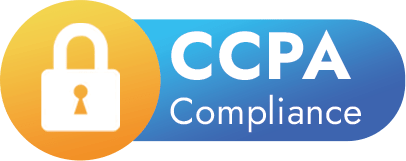As a hotelier, you know that providing a safe and comfortable environment for your guests is essential. Keeping your hotel smoke-free is an important part of this, and there are several best practices you can implement to ensure your hotel remains smoke-free. This article will provide you with tips on how to keep your hotel smoke-free, including creating a smoke-free policy, enforcing the policy, and providing support for guests who wish to quit smoking. By following these best practices, you can ensure that your hotel remains a safe and healthy environment for all your guests.
Establish Clear No-Smoking Policies
Establishing clear no-smoking policies is essential for businesses and organizations that want to protect the health and safety of their employees, customers, and visitors. No-smoking policies can be used to create smoke-free environments, which can help reduce the health risks associated with secondhand smoke.
No-smoking policies should be clearly defined and communicated to all employees, customers, and visitors. The policy should state that smoking is not allowed in any area of the business or organization, including offices, restrooms, hallways, and other common areas. It should also specify the types of smoking that are prohibited, such as cigarettes, cigars, pipes, and e-cigarettes.
No-smoking policies should also include the consequences for violating the policy. These consequences should be clearly outlined and should be enforced consistently.
No-smoking policies should also include provisions for designated smoking areas. These areas should be clearly marked and should be located away from entrances, exits, and other areas where people congregate. The designated smoking areas should also be well-ventilated to minimize the spread of secondhand smoke.
No-smoking policies should also include provisions for smoking cessation programs. These programs can help employees, customers, and visitors who are trying to quit smoking. The programs should provide resources and support to help people quit smoking and should be available to anyone who needs them.
No-smoking policies should also include provisions for enforcement. The policy should specify who is responsible for enforcing the policy and how violations will be handled. The policy should also include provisions for reporting violations and providing feedback.
No-smoking policies should be reviewed and updated regularly to ensure that they are up-to-date and in compliance with local, state, and federal laws. Establishing and enforcing clear no-smoking policies is an important step in creating a safe and healthy environment for everyone.
Provide Designated Smoking Areas
Designated smoking areas are designated areas where smoking is allowed. These areas are usually located in public places such as parks, beaches, and other outdoor areas. They are also sometimes found in enclosed areas such as bars, restaurants, and other indoor spaces.
Designated smoking areas are important for several reasons. First, they provide a safe and controlled environment for smokers to enjoy their habit without disturbing non-smokers. Second, they help to reduce the amount of second-hand smoke that non-smokers are exposed to. Third, they help to reduce the amount of litter caused by cigarette butts. Finally, they can help to reduce the amount of fire hazards associated with smoking.
Designated smoking areas typically have a number of features to ensure that smoking is done safely and responsibly. These features include signs that clearly mark the area as a designated smoking area, ashtrays to collect cigarette butts, and trash cans to dispose of other smoking-related waste. In some cases, designated smoking areas may also have designated smoking shelters to provide additional protection from the elements.
Designated smoking areas can be beneficial for both smokers and non-smokers. For smokers, they provide a safe and controlled environment to enjoy their habit without disturbing others. For non-smokers, they help to reduce the amount of second-hand smoke they are exposed to. Additionally, they help to reduce the amount of litter caused by cigarette butts and the amount of fire hazards associated with smoking.
Educate Guests on the Benefits of a Smoke-Free Environment
Smoke-free environments are beneficial to everyone, regardless of whether they are smokers or non-smokers. The most obvious benefit of a smoke-free environment is improved air quality. In areas where smoking is allowed, the air is filled with smoke particles, which can cause a variety of health problems, including respiratory issues, eye irritation, and even cancer. By eliminating smoking in public areas, the air quality is improved, which helps everyone breathe easier.
Another benefit of a smoke-free environment is improved safety. In areas where smoking is allowed, there is an increased risk of fire due to the presence of lit cigarettes. By eliminating smoking in public areas, the risk of fire is reduced, which can help keep everyone safe.
In addition to improved air quality and safety, a smoke-free environment can also have a positive impact on the environment. By eliminating smoking in public areas, the amount of second-hand smoke that is released into the atmosphere is reduced, which can help reduce air pollution.
Finally, a smoke-free environment can also have a positive impact on the economy. By eliminating smoking in public areas, businesses can save money on cleaning and maintenance costs, as well as reduce the risk of fire-related damages.
Overall, a smoke-free environment is beneficial to everyone, regardless of whether they are smokers or non-smokers. By eliminating smoking in public areas, the air quality is improved, the risk of fire is reduced, the environment is protected, and businesses can save money.
Enforce Strict Consequences for Smoking Violations
Enforcing strict consequences for smoking violations is an important part of maintaining a safe and healthy environment. Smoking is a serious health hazard and can cause serious health problems, including cancer, heart disease, and stroke. By enforcing strict consequences for smoking violations, employers can ensure that their employees are aware of the risks associated with smoking and are held accountable for their actions.
When enforcing strict consequences for smoking violations, employers should consider the severity of the violation. For example, if an employee is caught smoking in a non-smoking area, the employer may issue a warning and require the employee to attend a smoking cessation program. On the other hand, if an employee is caught smoking in a designated smoking area, the employer may issue a fine or require the employee to take a leave of absence.
In addition to issuing warnings and fines, employers should also consider implementing a policy that prohibits smoking in the workplace. This policy should be clearly communicated to all employees and should include specific consequences for violations. For example, an employer may require employees to take a leave of absence if they are caught smoking in the workplace. This policy should also include a system for reporting violations and a procedure for investigating and enforcing the policy.
Enforcing strict consequences for smoking violations is an important part of maintaining a safe and healthy workplace. By taking the necessary steps to ensure that employees are aware of the risks associated with smoking and are held accountable for their actions, employers can help to create a healthier environment for their employees.
Utilize Technology to Monitor and Enforce Smoke-Free Policies
Utilizing technology to monitor and enforce smoke-free policies is an effective way to ensure that people comply with regulations and laws regarding smoking in public places. This technology can be used to detect and identify smoking in public areas, as well as to monitor and enforce smoke-free policies.
One way to utilize technology to monitor and enforce smoke-free policies is through the use of smoke detectors. Smoke detectors are devices that detect the presence of smoke in the air and can be used to alert authorities when someone is smoking in a public area. This technology can be used to identify the location of the smoker and alert the appropriate authorities to take action.
Another way to utilize technology to monitor and enforce smoke-free policies is through the use of surveillance cameras. Surveillance cameras can be used to monitor public areas for smokers and to identify those who are smoking in public areas. This technology can be used to alert authorities to take action against those who are smoking in public areas.
Finally, technology can also be used to enforce smoke-free policies through the use of digital signage. Digital signage can be used to display messages that remind people of the smoke-free policy and to remind them to comply with the policy. This technology can also be used to alert authorities to take action against those who are smoking in public areas.
Utilizing technology to monitor and enforce smoke-free policies is an effective way to ensure that people comply with regulations and laws regarding smoking in public places. This technology can be used to detect and identify smoking in public areas, as well as to monitor and enforce smoke-free policies. By utilizing this technology, authorities can ensure that people are complying with smoke-free policies and that the public is protected from the dangers of secondhand smoke.
Hoteliers have a responsibility to their guests and staff to ensure their property is smoke-free. By implementing best practices such as enforcing a strict no-smoking policy, providing designated smoking areas, and offering smoking cessation resources, hoteliers can create a safe and healthy environment for everyone. With these measures in place, hoteliers can ensure their property is smoke-free and provide a pleasant and comfortable experience for all guests.
















